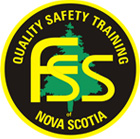Installing / Removing Traction Chains
Hazards Identified
Traffic, surface conditions, slip/fall, hypothermia
Hazard-Specific Personal Protective Equipment
Gloves, safety glasses, ice grippers recommended Appropriate cold weather clothing
Hazard-Specific Training
Practical demonstration by competent person, including proper lifting technique
Safe Work Practice
- Park vehicle in a safe level area.
- Notify base that you are leaving your vehicle to install or remove traction chains.
- Request assistance if the situation and conditions warrant.
- Ensure that brakes are engaged and vehicle will not move.
- Ensure that all cross chains, side chains, hooks and fasteners are in good condition before installing and after removal. Repair or replace as required.
- Use proper lifting technique when installing or removing chains.
- Ensure that chains are properly secured on the vehicle.
- Notify the base when you have returned to your vehicle and resumed operation.
- Remove your chains before proceeding over bare pavement to your next location. Wheel chains are to be used as necessary and should not be used on bare pavement unless absolutely necessary.
Regulations, Standards and References
Snow and Ice Control Manual
